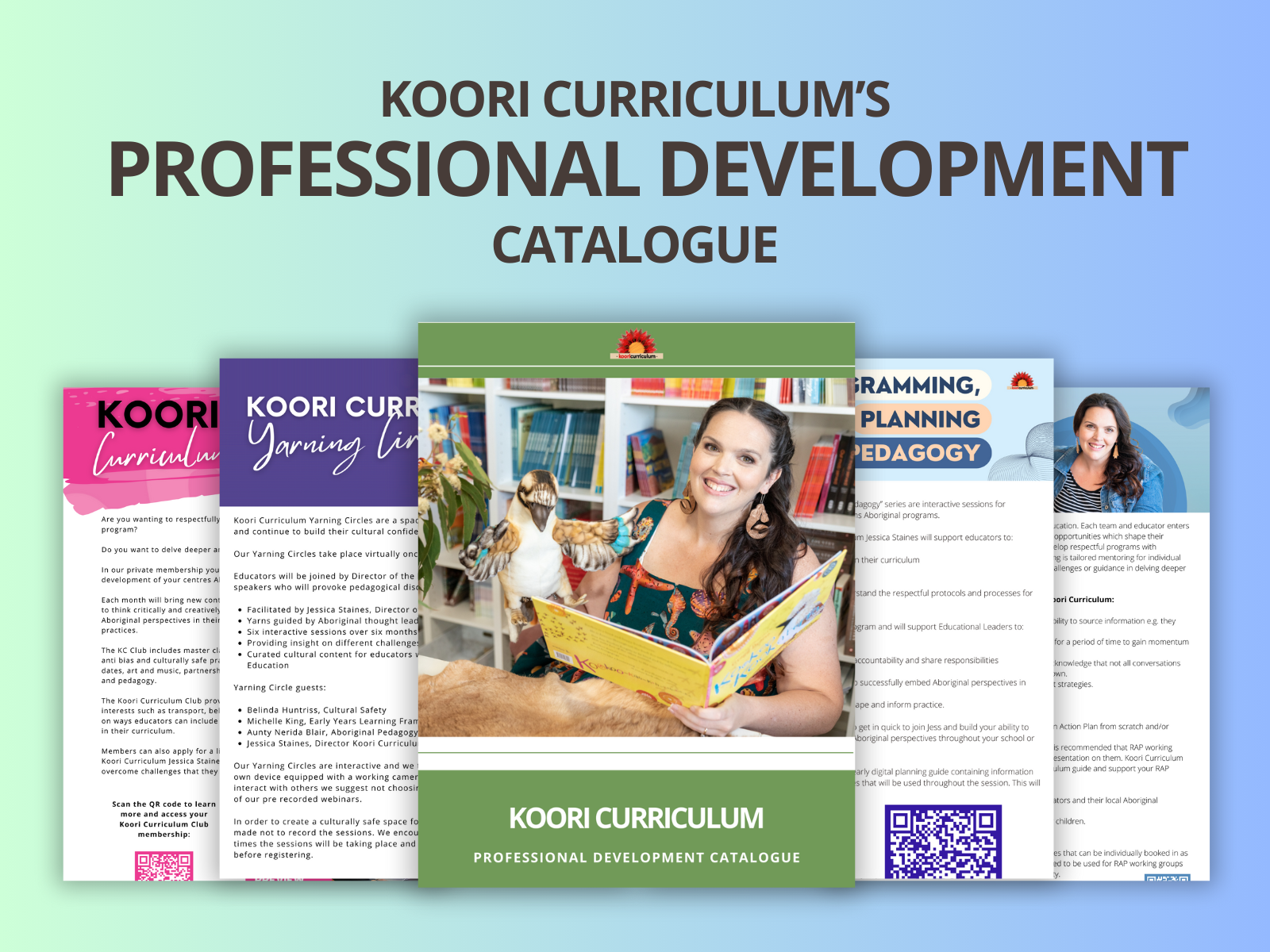
The Journey of a Family Day Care Educator

Introducing Guest Blogger - Emily Thompson
I’m Emily, a Family Day Care educator with Orange Family Day Care. I’m married with two daughters, we currently live in Orange NSW and are from Wollongong.
I love books, art, politics, swimming, Autumn in my town and dinosaurs.
I firmly believe that more we respectfully teach about our country’s history, Aboriginal culture and sustainability the better the outcomes will be for both Indigenous and non-Indigenous children. It’s never too early to teach children kindness, tolerance and respect.
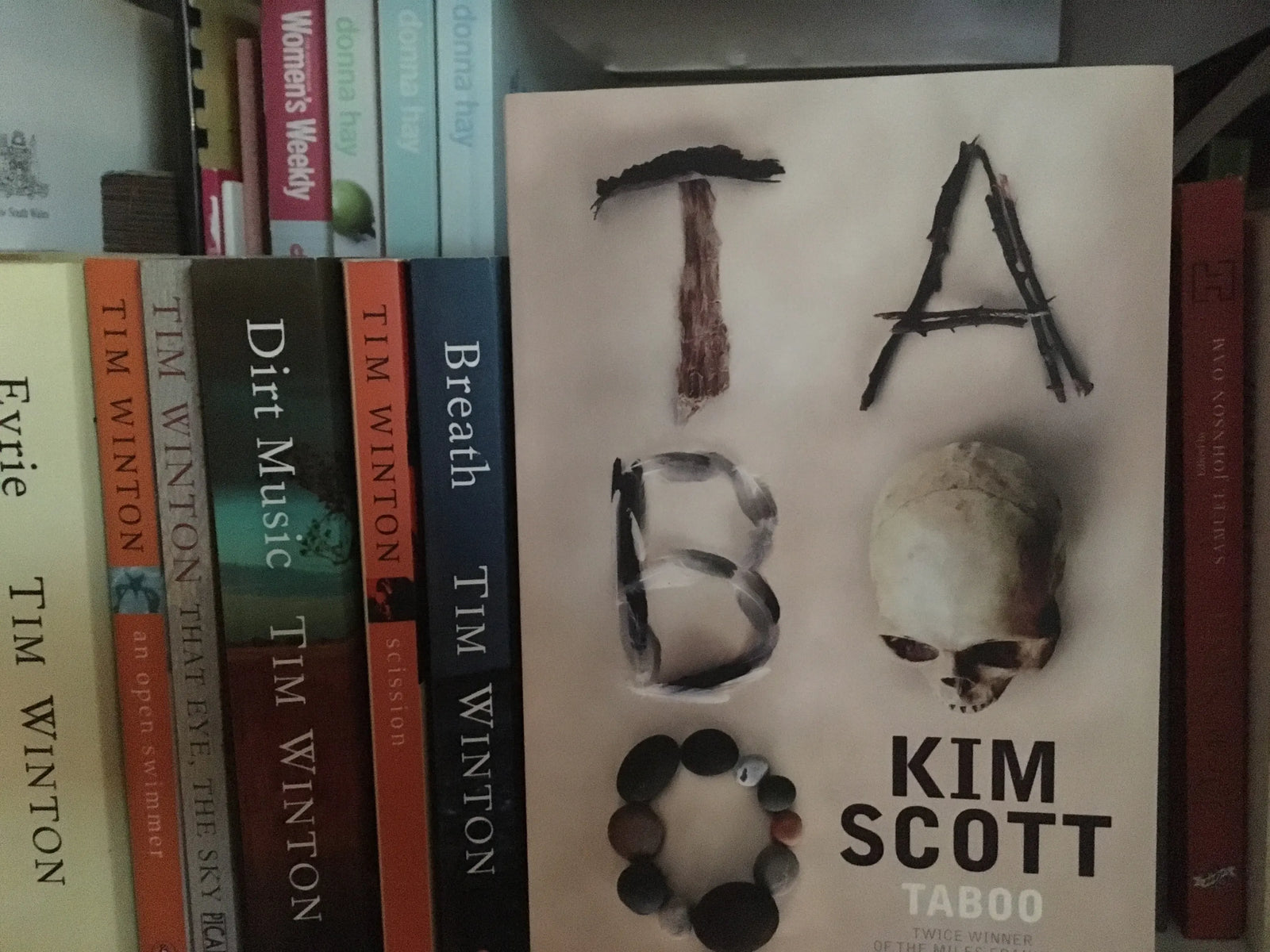
The Beginning.
My reconciliation journey started on January 5th, 2018. I had sent my children to their grandparents for two nights to program for my family day care for the whole year, set up my room and organise resources. I did none of those things and instead hit the bookshop and coffee shop with my best friend. At the bookshop I bought Kim Scott’s “Taboo”. That night I started reading it and changed my career trajectory forever.
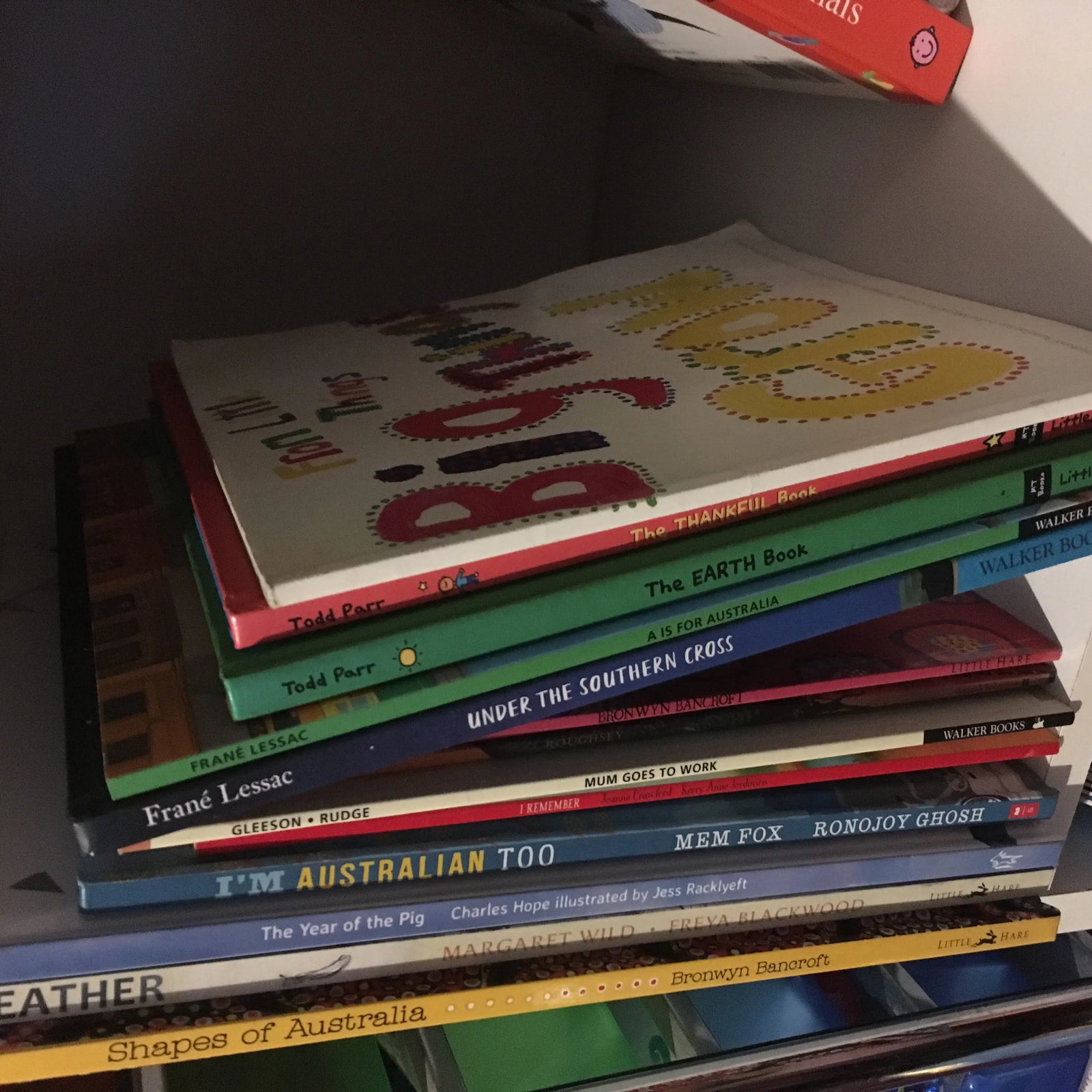
Amongst other themes explored in the book one key element was the focus on the rehabilitation in prison for Indigenous people, the high incarceration rate of Indigenous people compared to non-Indigenous people and the idea that traditional culture should be completely embraced. I loved the idea that instead of putting money and resources into making Aboriginal people “whiter”, that instead the best way to improve outcomes and increase cultural understanding is to fully embrace traditional Aboriginal culture. I immediately knew this was the direction I wanted to take. I had my first supervisor visit for the year a few weeks later and my support staff were very encouraging and supportive.
The first thing I did was buy cushions and a puzzle with Aboriginal art on them. I then went back to the bookstore and found several picture books that depicted characters that weren’t all Caucasian nuclear families. This has been ongoing and now we have many nationalities and cultures represented in our library.
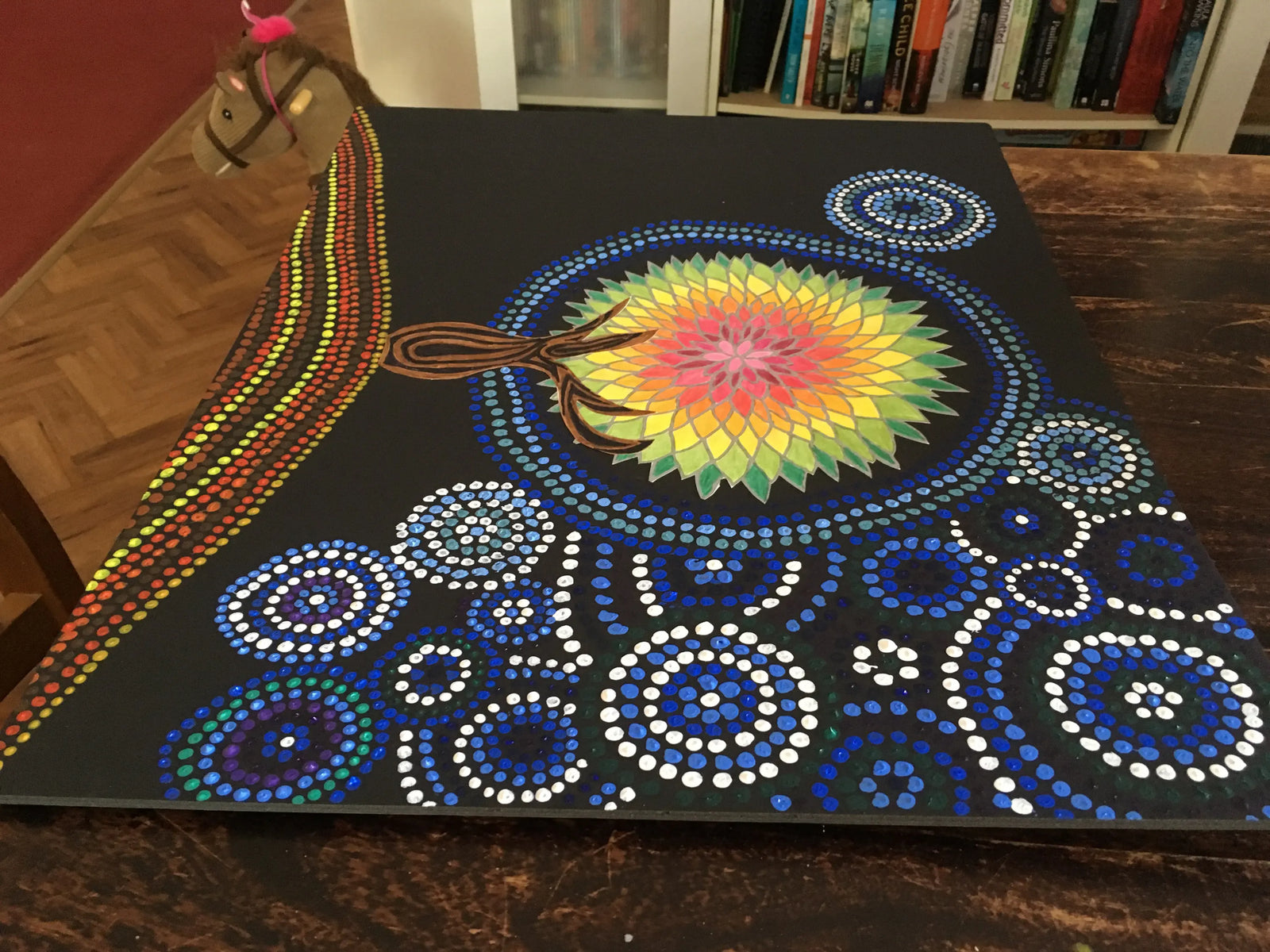
The first project I did with the children was the typical “dot art with cotton buds” and I’m embarrassed by it now, it was not respectful teaching. I promise I’m doing better now!However, I loved how we did it- we had the painting set up with a few colours every morning and over the next few weeks each child, their parents, siblings and grandparents all contributed to our collaborative art piece.
We won first prize at our local show, and it hangs proudly in our play area.
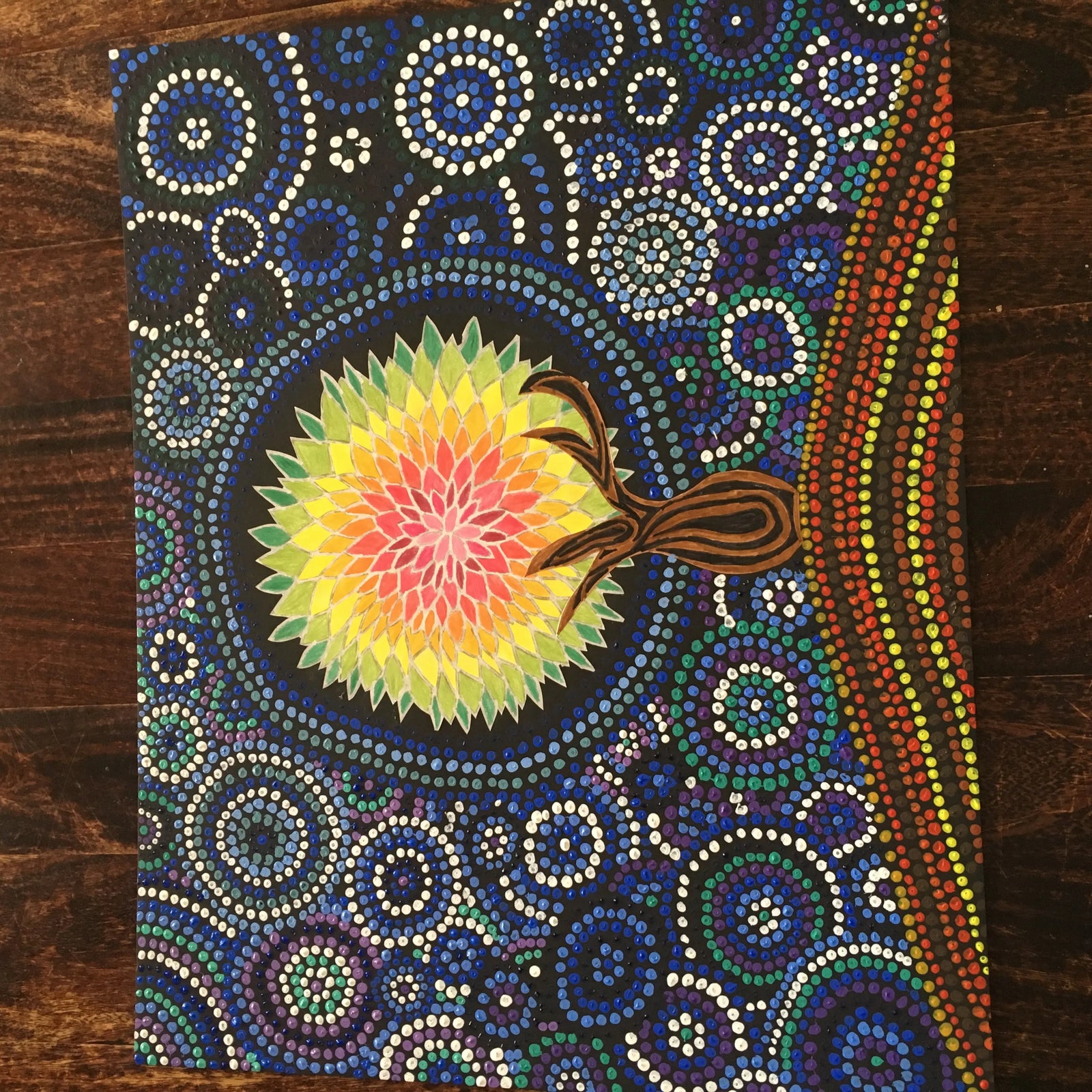
It is now surrounded by art that was created respectfully, creatively and lovingly and demonstrates our strong connection to land and commitment to sustainable practises.
The trouble I had with starting this journey was the fear of doing it wrong. And I kind of did, at the start. But I’m so proud of how far I’ve come, what I’ve learned and how I’ve inspired other educators in their efforts to include Aboriginal perspectives in a respectful way.


